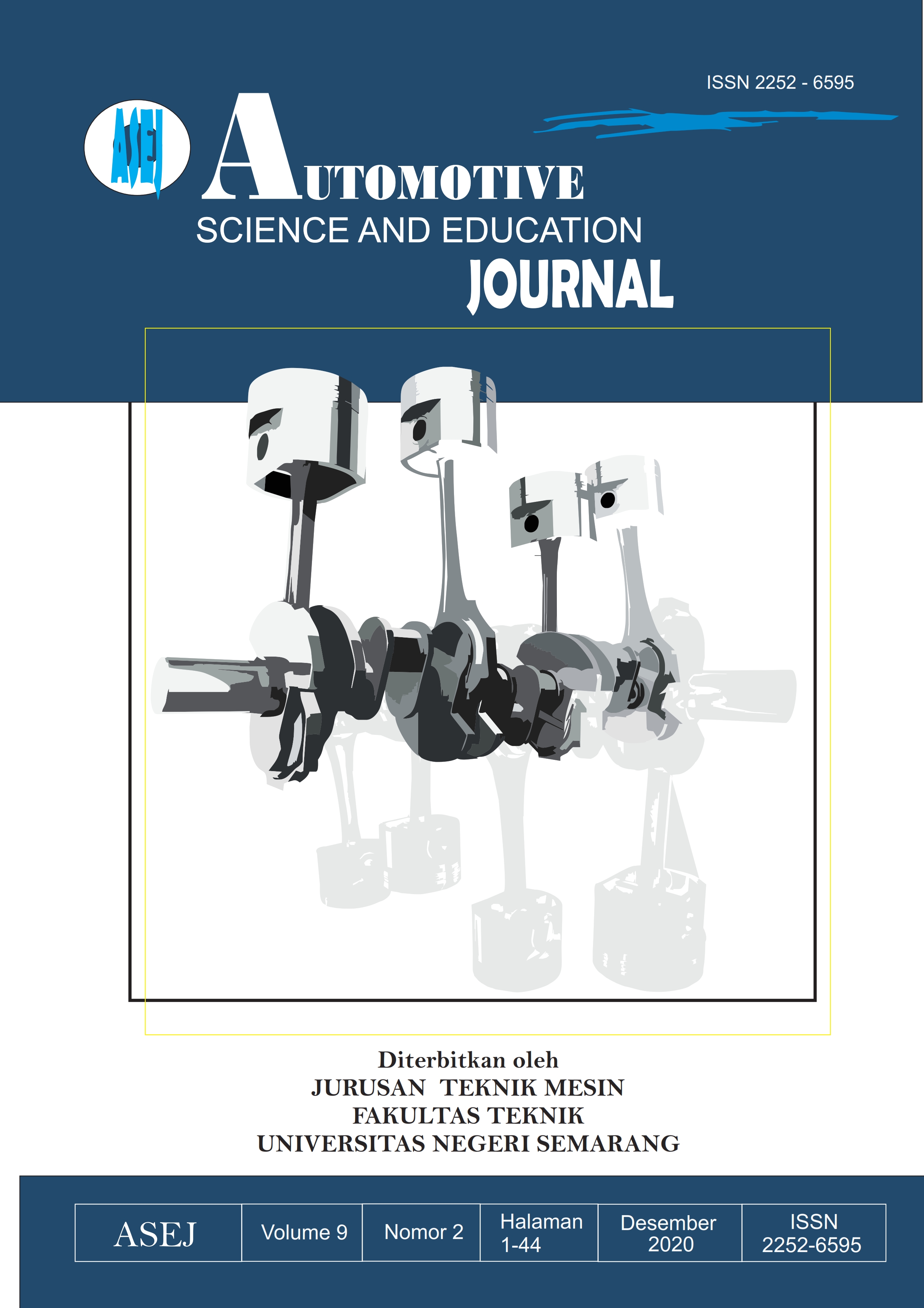PENGARUH PENGGUNAAN VARIASI BERAT ROLLER DAN PEGAS PULLY SEKUNDER PADA CVT ( COUNTINUOUSLY VARIABLE TRANSMISSION ) TERHADAP DAYA, TORSI, DAN KONSUMSI BAHAN BAKAR HONDA BEAT PGM-FI TAHUN 2013
Main Article Content
Abstract
Penelitian ini bertujuan untuk mengetahui Pengaruh Penggunaan Variasi Berat Roller dan Pegas Pully Sekunder pada CVT (Countinuously Variable Transmission) terhadap Daya, Torsi, dan Konsumsi Bahan Bakar Honda Beat PGM-FI 2013. Penelitian ini menggunakan desain penelitian quasi experimental dengan bentuk one-shot case study. Hasil penelitian menunjukkan bahwa pengujian menggunakan berat roller 11 gram, 13 gram (standar), 15 gram dan konstanta pegas sliding sheave 2.45 N/mm, 2.94 N/mm (standar), 3.43 N/mm berpengaruh terhadap peforma mesin. Torsi tertinggi dicapai oleh berat roller 11 gram dan pegas dengan nilai konstanta 3.43 N/mm pada putaran mesin 3000 rpm sebesar 19.29 N.m. Daya tertinggi dicapai oleh berat roller 11 gram dan pegas dengan nilai konstanta 2.45 N/mm pada putaran mesin 5000 rpm sebesar 8.55 HP. Konsumsi bahan bakar yang paling ekonomis dari putaran rendah sampai putaran tinggi dengan penggunaan variasi berat roller 11 gram dan pegas 2.45 N/mm memiliki konsumsi bahan bakar spesifik sebesar 0.095 kg/kW.jam.
Article Details
Proposed Creative Commons Copyright Notices
1. Proposed Policy for Journals That Offer Open Access
Authors who publish with this journal agree to the following terms:
- Authors retain copyright and grant the journal right of first publication with the work simultaneously licensed under a Creative Commons Attribution License that allows others to share the work with an acknowledgement of the work's authorship and initial publication in this journal.
- Authors are able to enter into separate, additional contractual arrangements for the non-exclusive distribution of the journal's published version of the work (e.g., post it to an institutional repository or publish it in a book), with an acknowledgement of its initial publication in this journal.
- Authors are permitted and encouraged to post their work online (e.g., in institutional repositories or on their website) prior to and during the submission process, as it can lead to productive exchanges, as well as earlier and greater citation of published work (See The Effect of Open Access).
Proposed Policy for Journals That Offer Delayed Open Access
Authors who publish with this journal agree to the following terms:
- Authors retain copyright and grant the journal right of first publication, with the work [SPECIFY PERIOD OF TIME] after publication simultaneously licensed under a Creative Commons Attribution License that allows others to share the work with an acknowledgement of the work's authorship and initial publication in this journal.
- Authors are able to enter into separate, additional contractual arrangements for the non-exclusive distribution of the journal's published version of the work (e.g., post it to an institutional repository or publish it in a book), with an acknowledgement of its initial publication in this journal.
- Authors are permitted and encouraged to post their work online (e.g., in institutional repositories or on their website) prior to and during the submission process, as it can lead to productive exchanges, as well as earlier and greater citation of published work (See The Effect of Open Access).
